Blog about successful marketing strategies in russia
What Ads in Russia Pay Off Better?


MEDIA BUYING
Share this Post
Every year marketers and companies’ heads face a lot of problems:
- How do they correctly distribute the marketing budget?
- What channels are more effective in one or another field?
- What indicators should be expected from an advertising campaign?
Nielsen conducted a research of return on investments made in advertising campaigns via various media channels using ROI. A similar study in 2018, but involving only Internet channels, was made by Roistat. Here we share data from these studies that will help answer questions stated above.
*Marketing mix model building by Nielsen covers the period from 2014 until 2018. In 2018, there was an analysis of efficiency of more than 1,000 omni-channel advertising campaigns with a total budget of more than 8 billion rubles for more than 120 brands in various communication channels (TV, radio, web banners, online video, placement in social media, out-of-home ads and other digital and traditional media). The analysis made mostly in the FMCG market (85% - FMCG, 15% - non-FMCG).
What Advertising Channel is More Efficient?
In 2017, the average ROI for all media channels was 0.97, i.e. every ruble invested in advertising brought 97 kopecks of a short-run effect on sales (during the placement and up to 3 months afterwards). In Europe, the average ROI varies from 0.2 to 0.4, which is related to higher costs of ads in the Western world.
The study by Nielsen demonstrates that media channels affect the customer demand more and more. As compared to 2015 when ROI came down to 0.6, the following years show positive dynamics.
In 2018, the highest return rates were shown by social media (2.18 rubles), online video (1.90 rubles), and web banners (1.74 rubles).
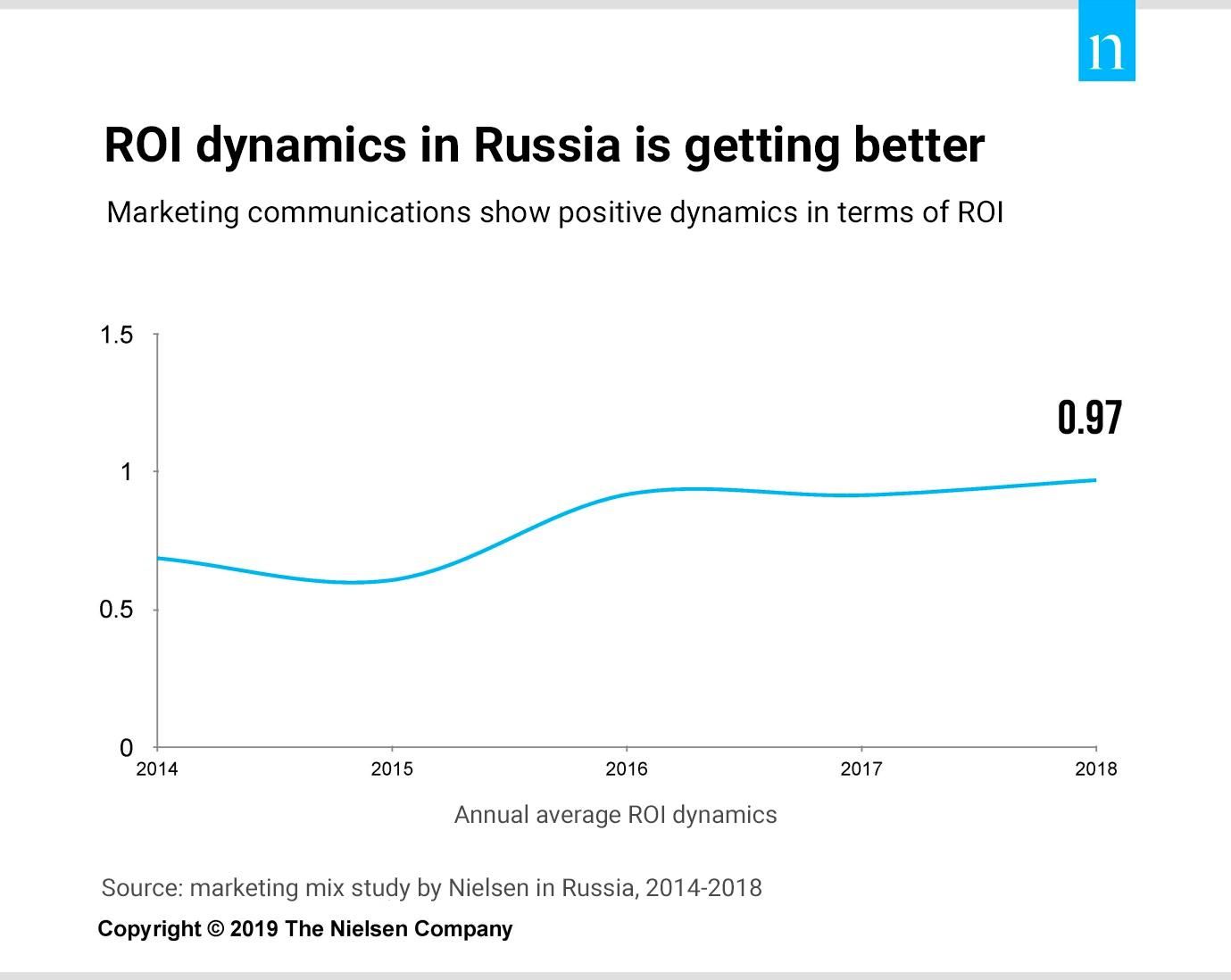
Banners and online video, on average, bring a twice as larger return on investments than TV, while social media (including bloggers) demonstrate even higher rates. That is why TV suits least of all for a short-run effect from sales—ROI for TV ads is only 90 kopecks coming from 1 ruble of investments. At that, the volume of aftersales from TV ads exceeds the aggregate volume of sales via other channels two and a half times.
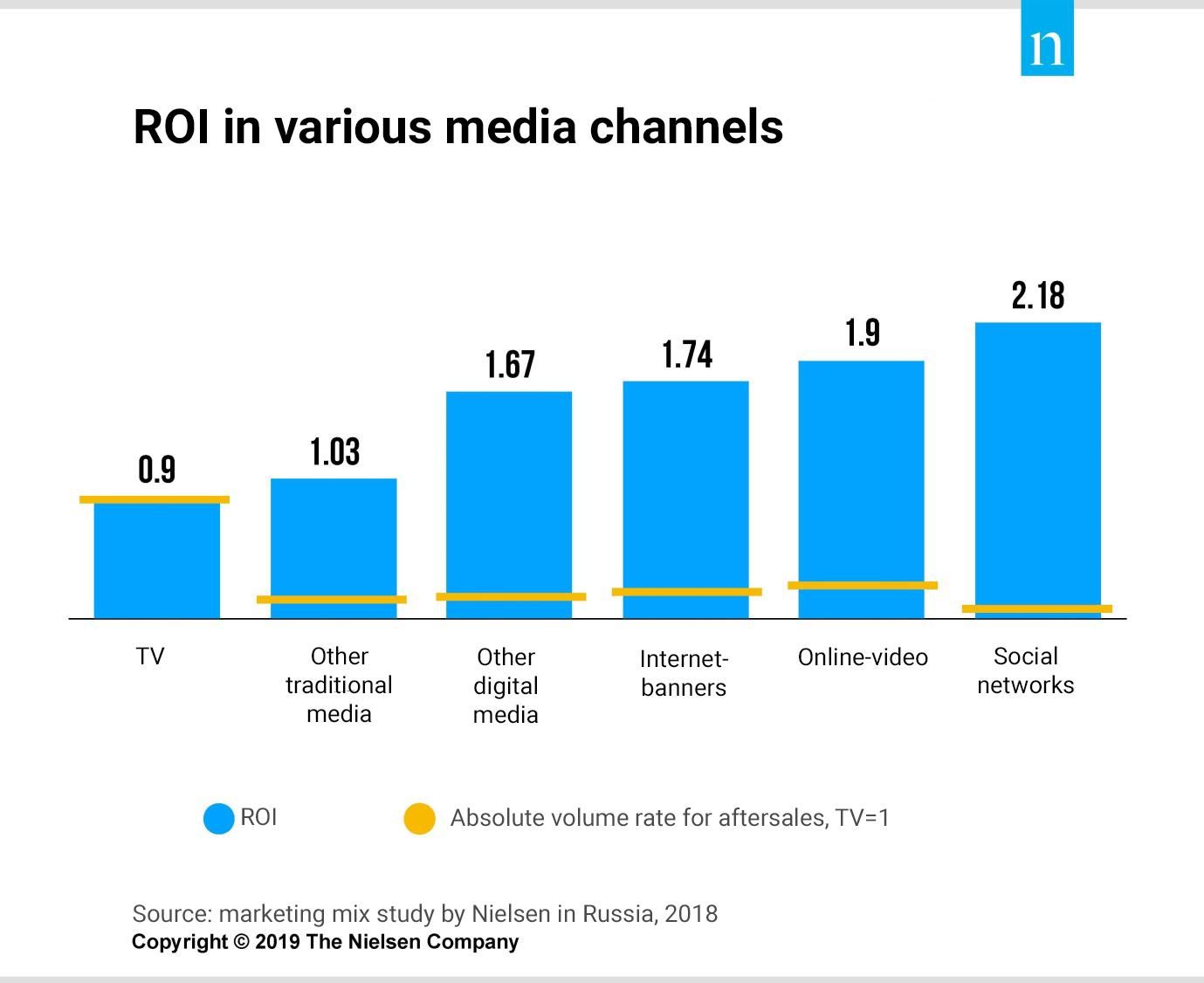
In the long run, the most stable channel is TV—it shows the smallest ROI fluctuations. Social media, on the contrary, are notable for a high divergence of return in various advertising channels. In digital media, the situation is reversed—higher average rates are accompanied with a substantial divergence of ROI from campaign to campaign, and in some cases it turns to be even lower than on TV.
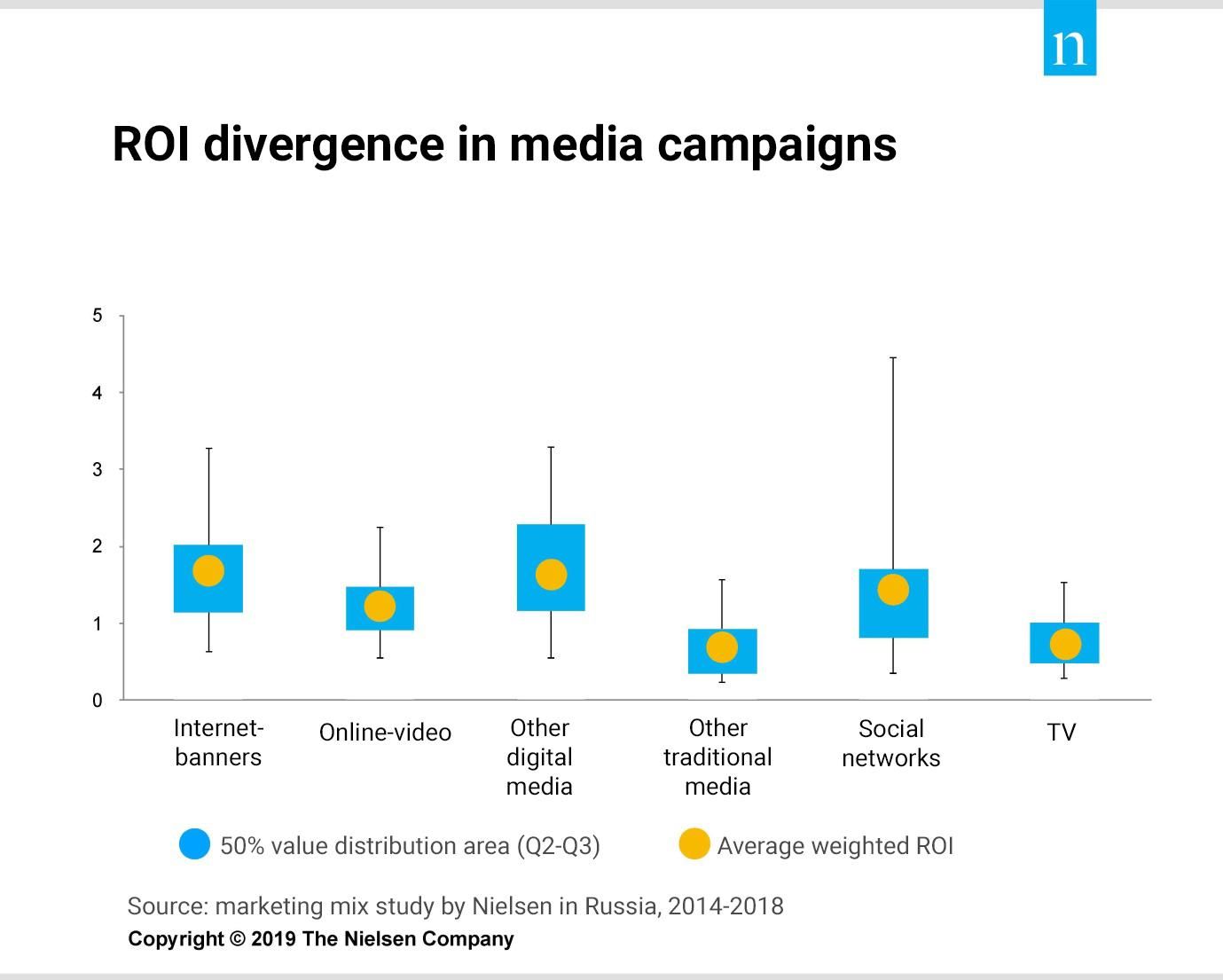
Effective Media Strategy
We multiply highlighted the importance of omni-channel for promotion to achieve the best result. Nielsen experts determined an optimum quantity of advertising channels per one campaign—4. This is the number of simultaneously used channels that will give the highest ROI. Using three advertising channels, we will get 0.7 ROI, using four, higher than 1; when using more channels, ROI systematically goes down, but the result becomes more stable.
More about Online Advertising
Roistat (end-to-end analytics system) annually conducts a study to evaluate efficiency of advertising tools on grounds of aggregated and anonymous data from thousands of advertisers. In 2018, 5,000 advertisers were sampled.
Return on investment was calculated using a formula:
ROI = ((profit – self-cost – advertising expenses) / advertising expenses)) * 100%
2018 key results:
- Just like in the study of 2017, the search ads go on leading by return on investment. Next come ads in the display network, and only then do social media come.
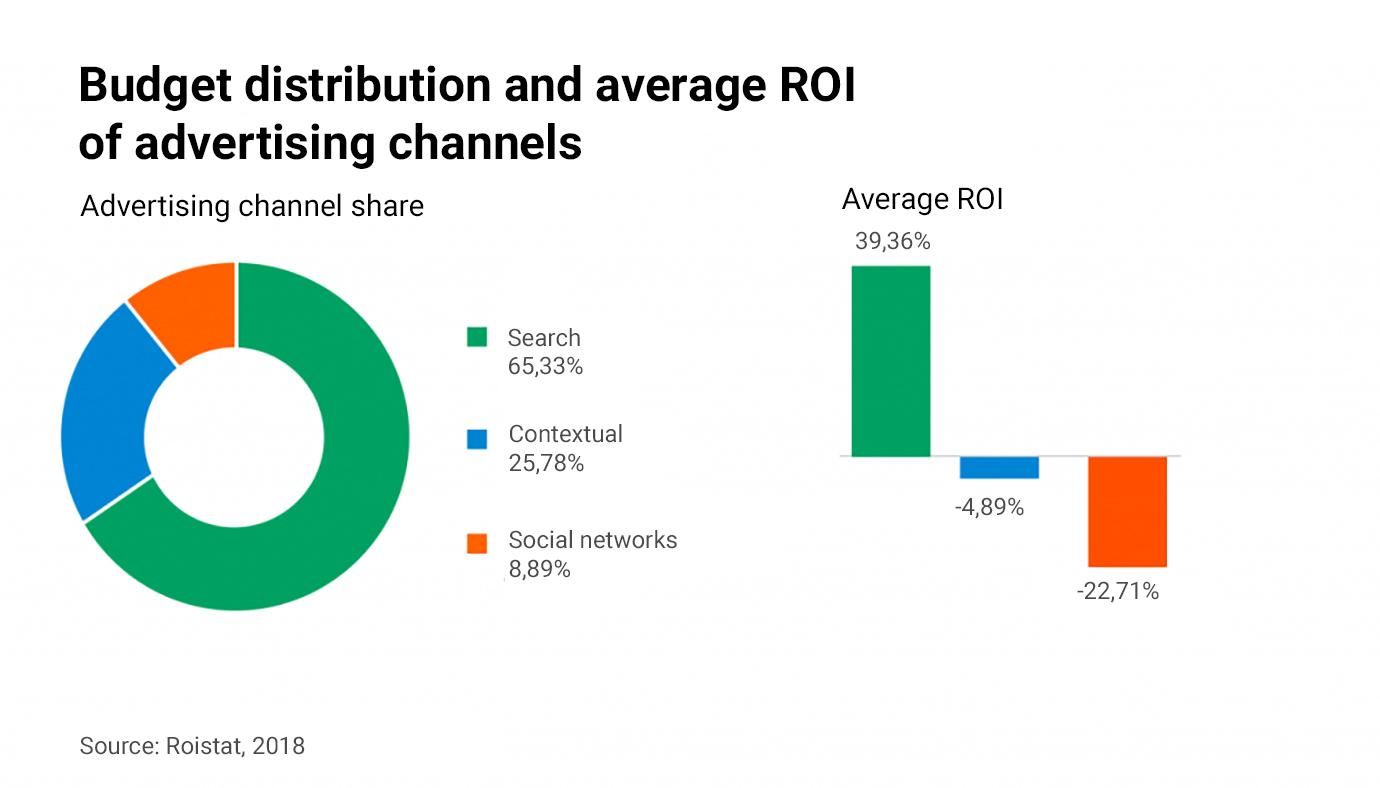
- If we look at major players, it can be noted that Yandex.Direct and Google Ads still pay back investments in them and are effective enough. However, the champion is still Yandex.Direct both in search and in thematic platforms.
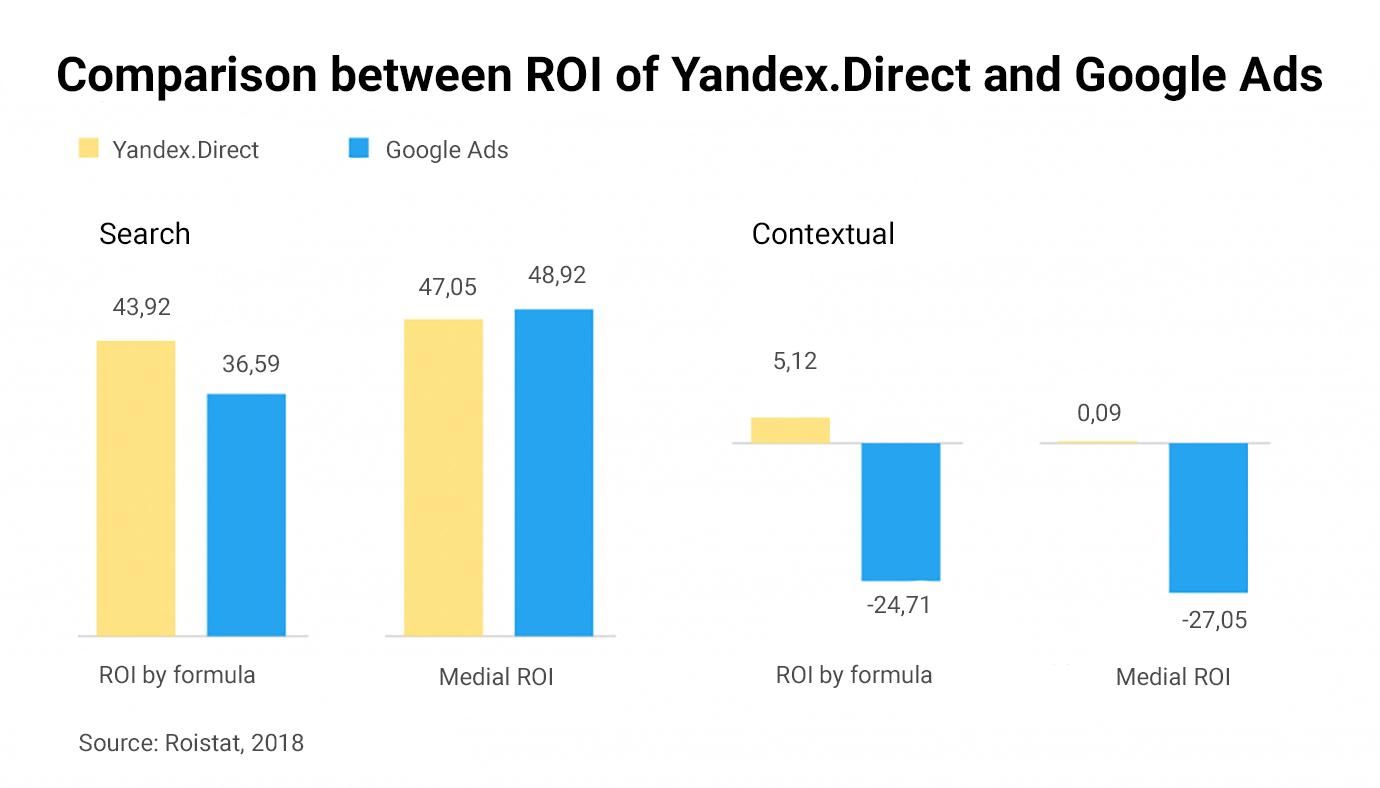
- As a result, in search as of 2018, for 60% advertisers Yandex.Direct proved to be more effective than Google Ads. In the context network, Yandex.Direct showed a better result for 70% advertisers.
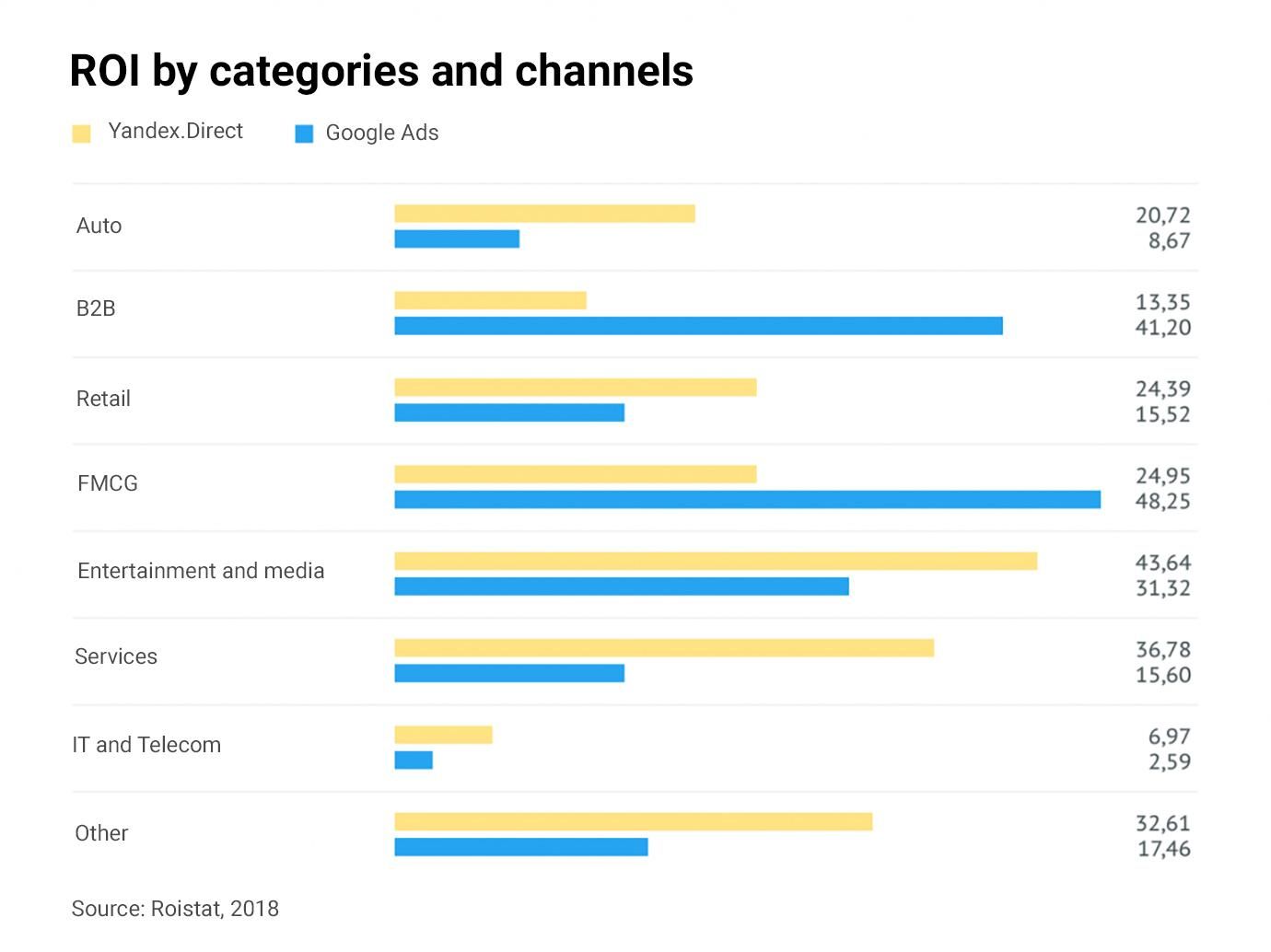
If we look at ROI in the context of industries, Google Ads showed the highest efficiency in B2B and FMCG, while Yandex.Direct leads in all others by a clear margin.
- Ads in Moscow and Saint Petersburg lead by efficiency, while regions lag too far behind by this rate. It can be caused by the fact that many advertisers do not divide campaigns by regions and large cities, which leads to budget overruns.
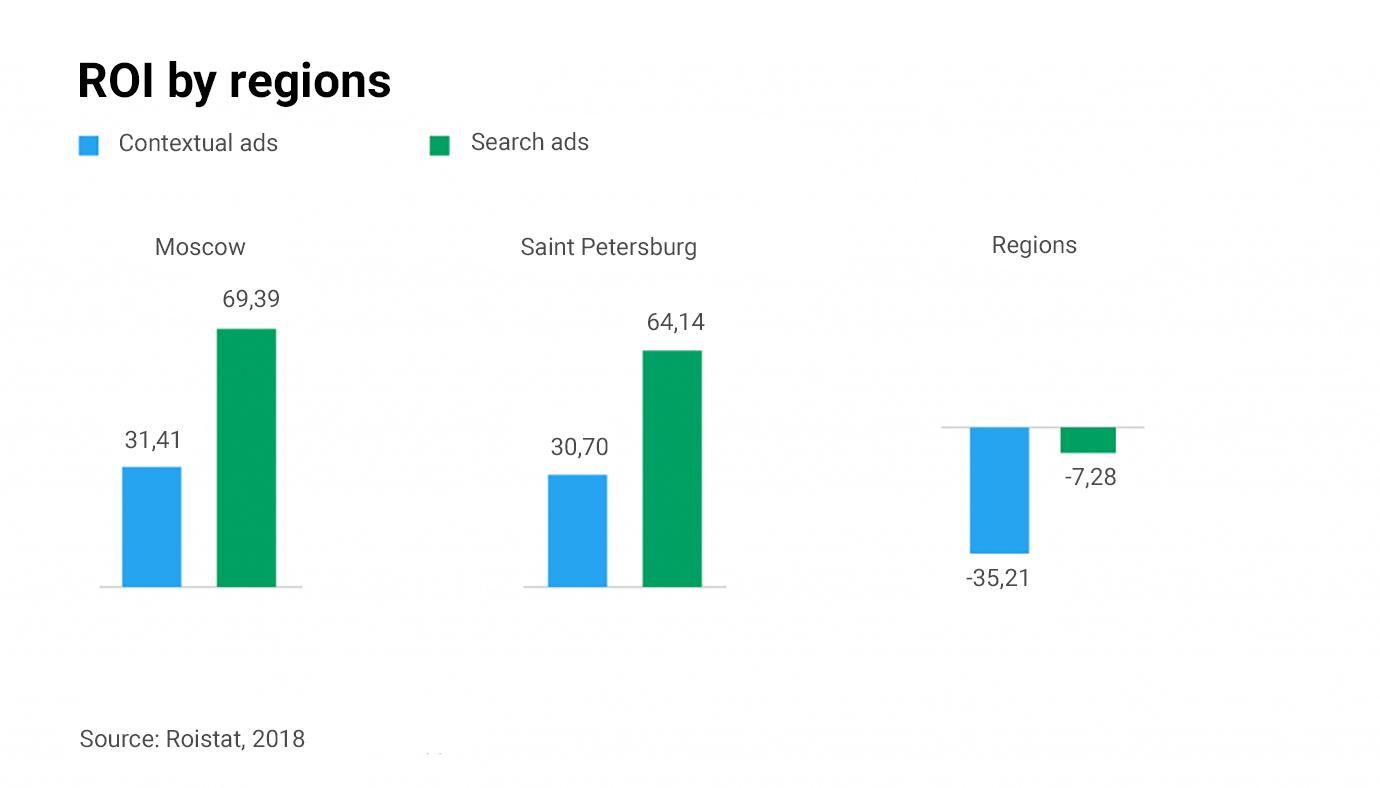
Conversions by industries
The highest conversion from bids to sales is seen in FMCG. This may be caused by a small average bill and a quick turn of fast-moving consumer goods. If people came to order some dog food, they do not have many reasons to cancel the purchase at the finish.
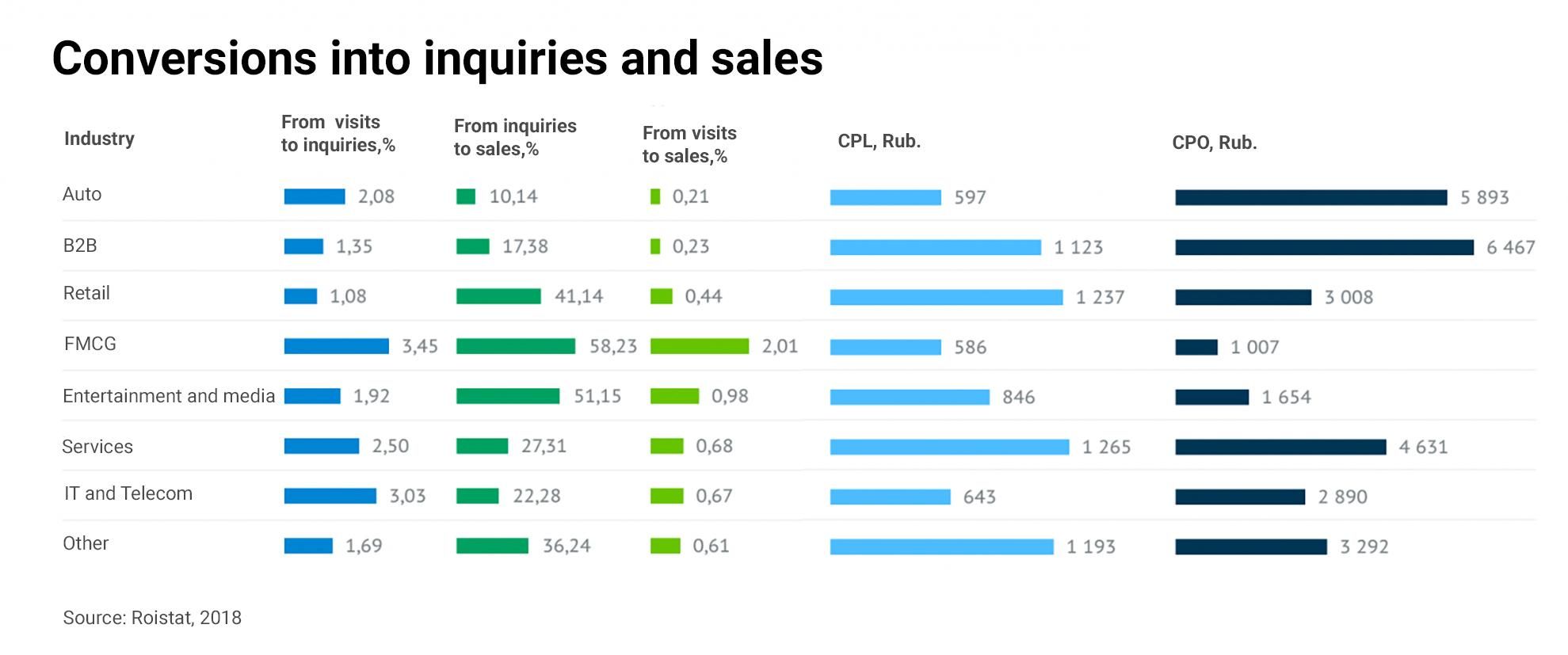
Recommendations
Use four different communication channels for promotion.
If you promote your business only online, when setting up context ads in search and networks, pay special attention to geotargeting. Any changes in advertising campaigns can affect ROI—follow statistics, analyze, and draw right conclusions.
Otherwise, delegate media planning and advertising settings to experts from the RMAA marketing agency, and we will choose optimal promotion channels for your business in the Russian market.
Also feel free to download our White Papers and learn more about Russian advertising market.
Join 2,000+
of your Peers!
You will be the first to know about Russian marketing insights, news and updates from our agency. Stay tuned!
Get our latest articles delivered to your email inbox and get our exclusive White Paper
"A media buyer's quick guide for effective work in Russia"
for FREE!
How does the Media Buying Market in Russia Work?
Navigating the Media Buying System in Russia
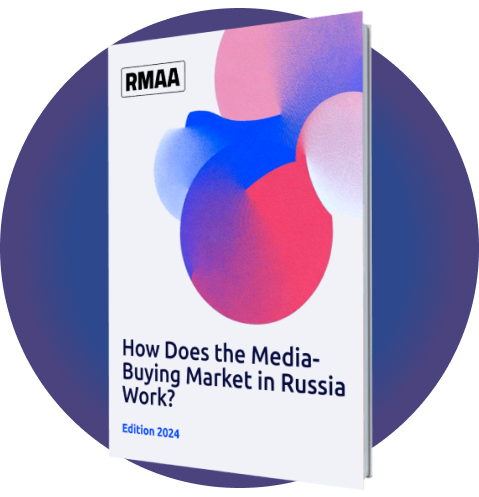
Ready to partner with the specialists in Russian marketing and advertising?
About the Author
Head of Digital, editor-in-chief of the RMAA Agency Blog
Join 2,000+ of your Peers!
Get our latest articles delivered to your email inbox and get our exclusive White Paper "A media buyer's quick guide for effective work in Russia?" for FREE!
You will be the first to know about Russian marketing insights,
news and updates from our agency.
Stay tuned!
We're updating our website's design step by step, so some pages may look different. Thank you for your understanding.
Got it














